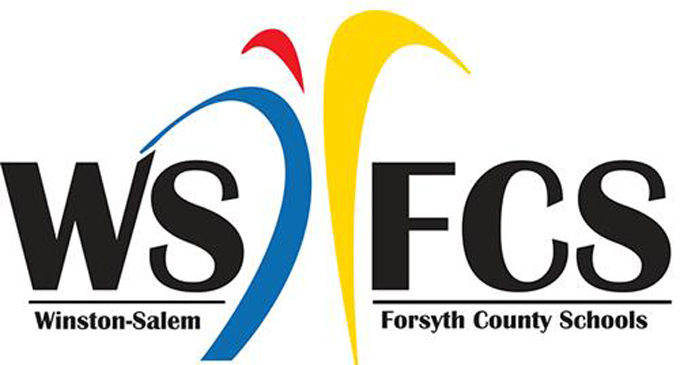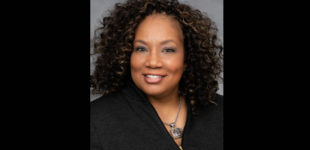Superintendent makes proposal for reopening schools

Districts still waiting on guidance from Gov. Roy Cooper
Earlier this week Superintendent Dr. Angela P. Hairston provided more information on what schools could look like at the start of the 2020-21 school year.
As reported by The Chronicle last month, the state’s Department of Health and Human Services has told districts across the state to prepare to open schools under three different scenarios. Plan A, which is the least likely of the three to be used, calls for minimal social distancing and will be implemented if COVID-19 metrics stabilize and don’t get worse. Plan B calls for social distancing restrictions and reduced density. And Plan C calls for remote learning only and suspends all in-person learning.
On July 1, Gov. Roy Cooper was scheduled to give more guidance on how K-12 public schools will open, but a few days earlier he announced he would delay his announcement a few weeks. While still waiting for the final verdict from the state, during a special called meeting on Tuesday, July 7, Hairston discussed how district leaders plan to meet the requirements for reopening schools.
She said district leaders have been working for the past month creating plans for the different scenarios and they have narrowed their focus based on what is affordable and safe. Hairston has said she believes schools will open under Plan B with some nuances of Plan C included as well.
“We were asked as a school district to develop a plan for each of these areas: Plan A, Plan B and Plan C,” she said. “It was communicated that we will receive further guidance. I certainly understand in these changing times that we need to be flexible and sometimes wait for further guidance, but in the interim we’ve been asked to continue to develop our plan.”
Scheduling
When looking at scheduling for the proposed plan for the district, students grades K-6 will attend school daily (Monday-Friday). All EC (Exceptional Children), Self-Contained Students, OSC (Occupational Course of Study) students, and students who attend special needs schools will attend school Monday-Friday as well.
To meet social distancing requirements, students who attend school daily will be split between elementary and middle schools throughout the district. Hairston said the original plan was to have face-to-face learning for students grades K-8, but the district doesn’t have enough facilities to make that happen.
“The guidance for that was based on the age that is recommended by the Department of Social Services relative to leaving children unattended,” Hairston said. “One of our recommendations was to have K-8 every day, but we just could not fit all of our children in the facilities. Even when we went to the high school level, we could not get everyone in a facility. That means we would need a significant amount of money to add mobile units and those dollars are not available to us.”
Scheduling for students grades 7–12 is a little more complicated. Students grades 7-9 would be split into two cohorts, Cohort A and B, and assigned to a high school campus in the district.
Cohort A will learn the old-fashioned way, in a classroom, on Monday and Tuesday, and Cohort B will have in-person lessons on Thursday and Friday. Wednesday is scheduled as a remote learning day.
According to Hairston, although students will only physically be in the classroom twice a week, they will still be expected to “attend” school five days a week. On days they aren’t in the classroom, students will be expected to participate in remote learning.
In the proposed plan, students grades 10-12 will participate in virtual learning on Monday, Tuesday, Thursday and Friday. Wednesday will be reserved for face-to-face learning where students can receive tutoring.
To help ensure schools are adhering to 50% maximum occupancy requirements, Hairston has also proposed suspending Pre-K until Oct. “This will allow us an opportunity to access our class sizes and to ensure that we have the space required,” Hairston said during her presentation earlier this week.
Transportation
In the proposal, transportation will only be guaranteed for EC students, students with IEP’s (Individualized Education Plans) and students covered under the McKinney-Vento Homeless Assistance Act.
All other students will receive transportation based on availability.
Guidance from the state has told schools to limit the maximum of all transportation vehicles to 50% as well. Hairston said to meet the requirements outlined by the state and continue providing transportation for every student who currently rides a school bus, the district would need an additional $17 million.
“We are able to place 24 students on a bus provided they wear a mask, so we’re still looking into that, but we realize we don’t have an additional $17 million for transportation,” Hairston said. “So transportation will be on first-come first-serve basis.”
Students who do not have transportation will be offered an opportunity to enter the Virtual Academy until transportation can be arranged.
Next Steps
Moving forward, Hairston says district leaders will continue working to find the best practices for reopening schools in the fall.
Hairston said district leads plan to take their proposal to the community for feedback. She said over the next two weeks, the proposal will be vetted by parents, teachers, and students throughout the district using surveys, Zoom calls, and Microsoft Teams. After Gov. Cooper gives more guidance, the district will present a final plan.
“We want to talk through each of these plans and gain feedback,” Hairston continued. “We want to begin work on implementing our education plan as soon as possible, but we realize that we must wait on more guidance.”
To prepare for the upcoming school year, local teachers are scheduled to begin virtual workshops on Monday, July 13.
Before wrapping up her presentation, Hairston said she understands the proposal isn’t perfect but it’s what is affordable for the district. To meet every guideline outlined in Plan B, Hairston said Winston-Salem/Forsyth County Schools would need about $40 million in additional funding.
“It would take between $40 and $45 million to execute all aspects of the plan. We realize we don’t have those types of dollars, so we really had to look at our resources and bring to you a plan that we can execute without those additional resources,” Hairston said. “We realize this is not a perfect plan, but it is a plan that is affordable to us.”
The Winston-Salem/Forsyth County Board of Education will hold a special called meeting on Thursday July 9, to discuss a potential resolution to the State Board of Education and Governor Roy Cooper requesting additional support and consideration in light of the COVID-19 reopening options.
The special called meeting is scheduled to begin at 11:30 a.m. The public can watch the meeting via WS/FCS Educational TV Cable 2 or it can be watched live on the Cable 2 website.











